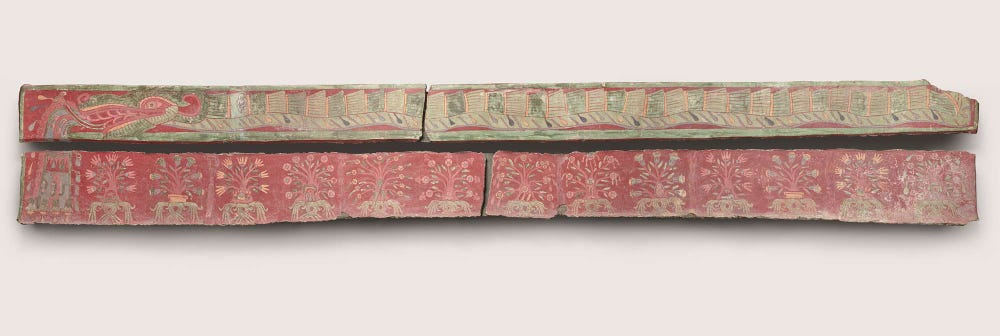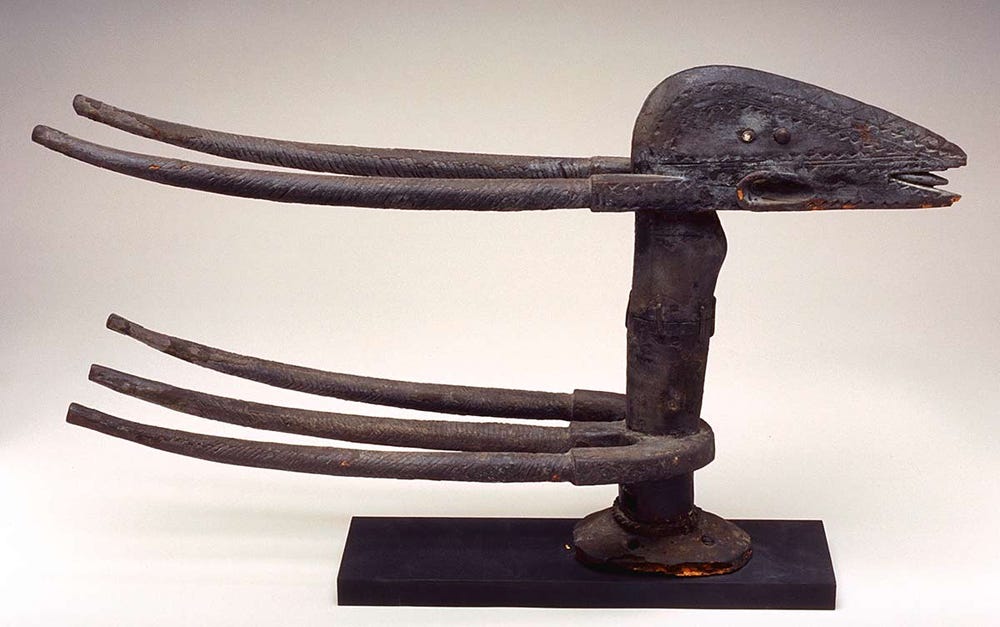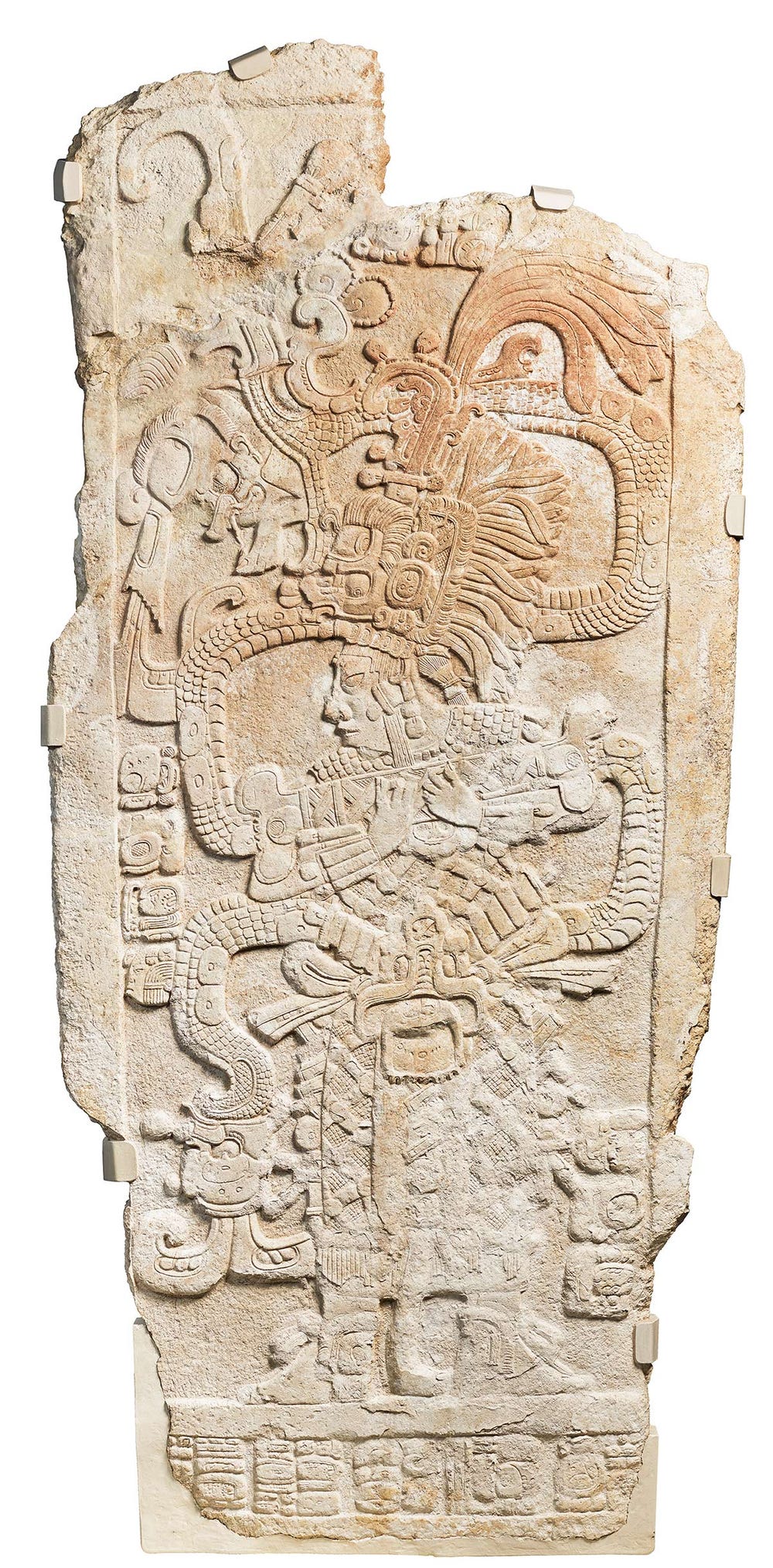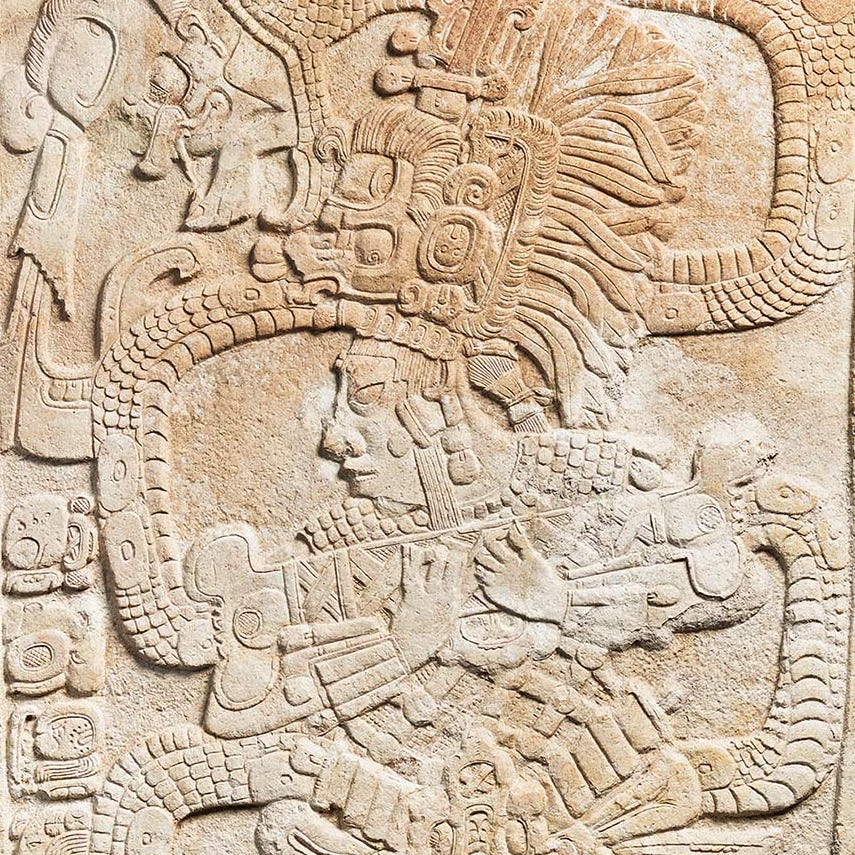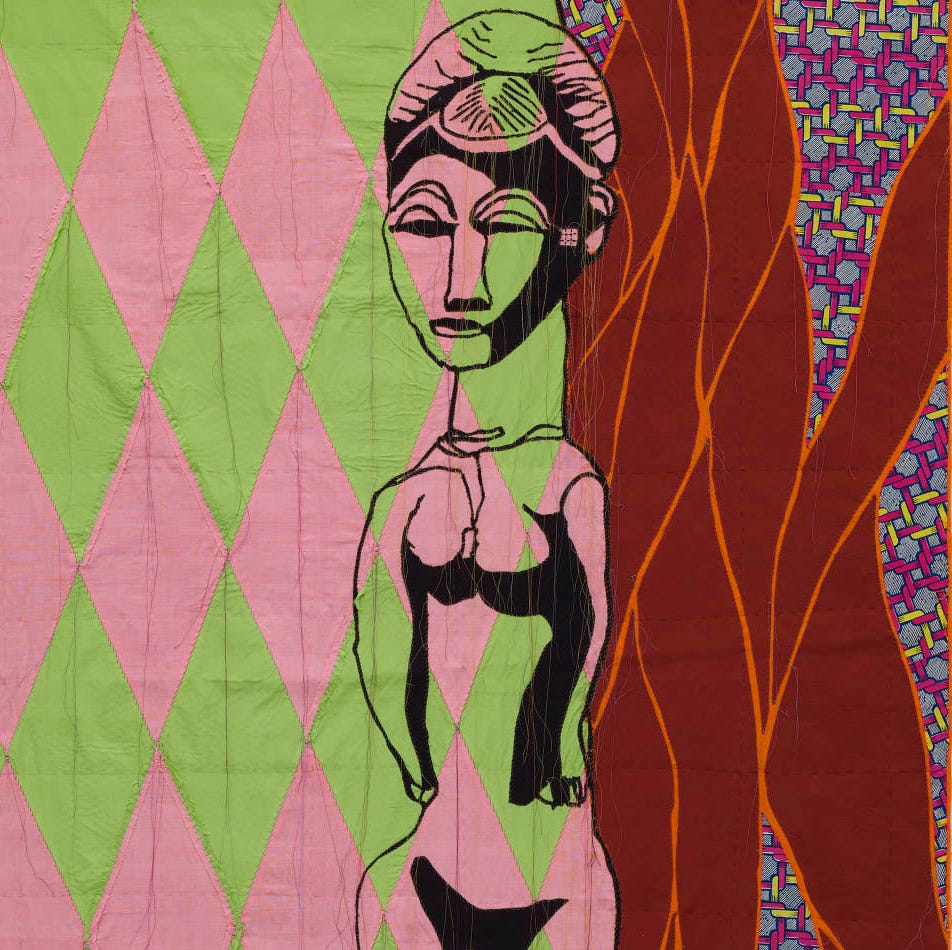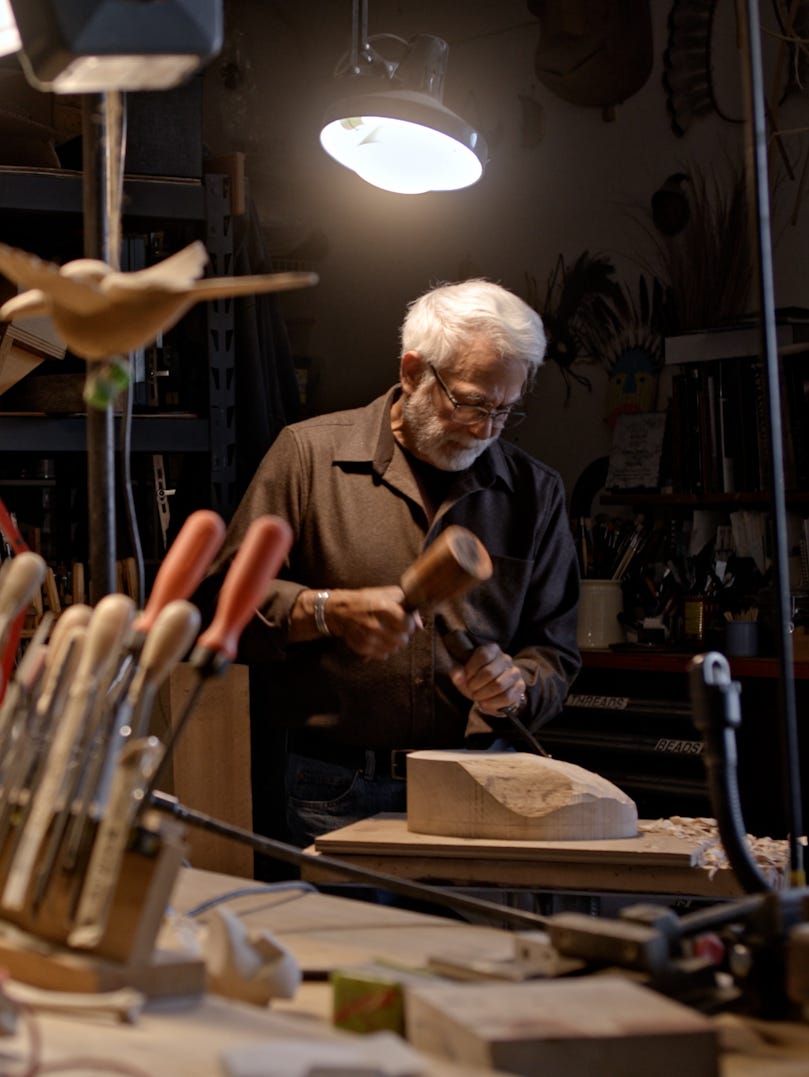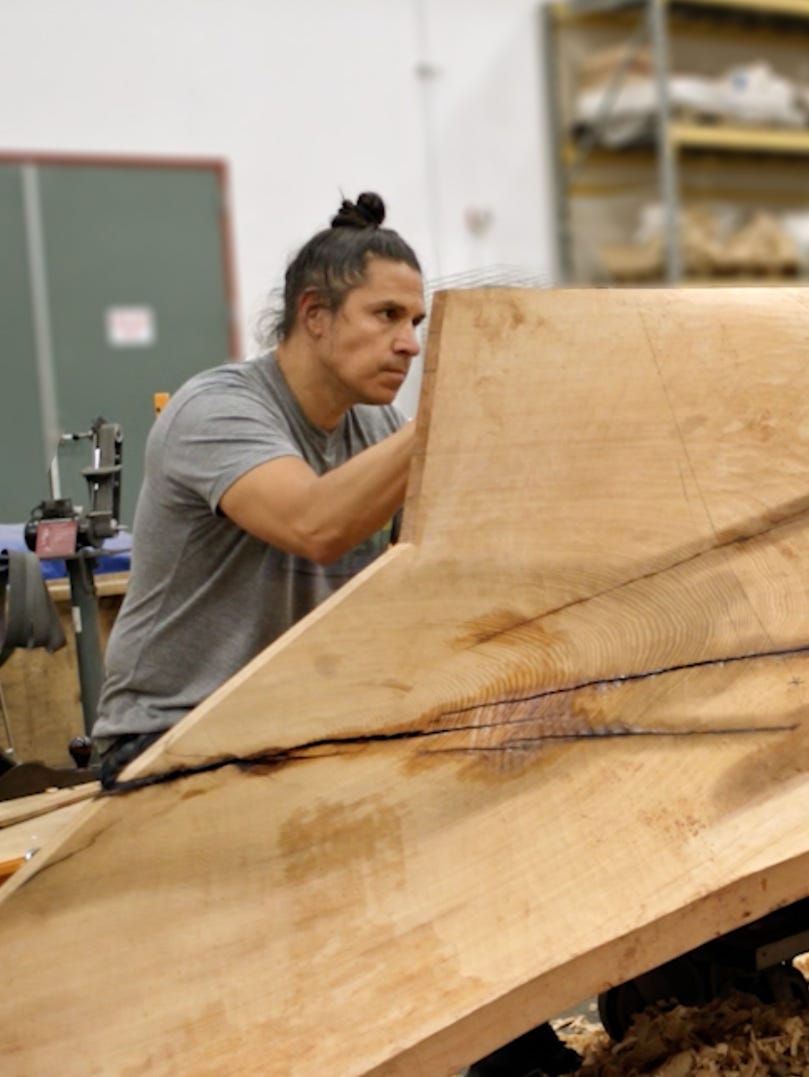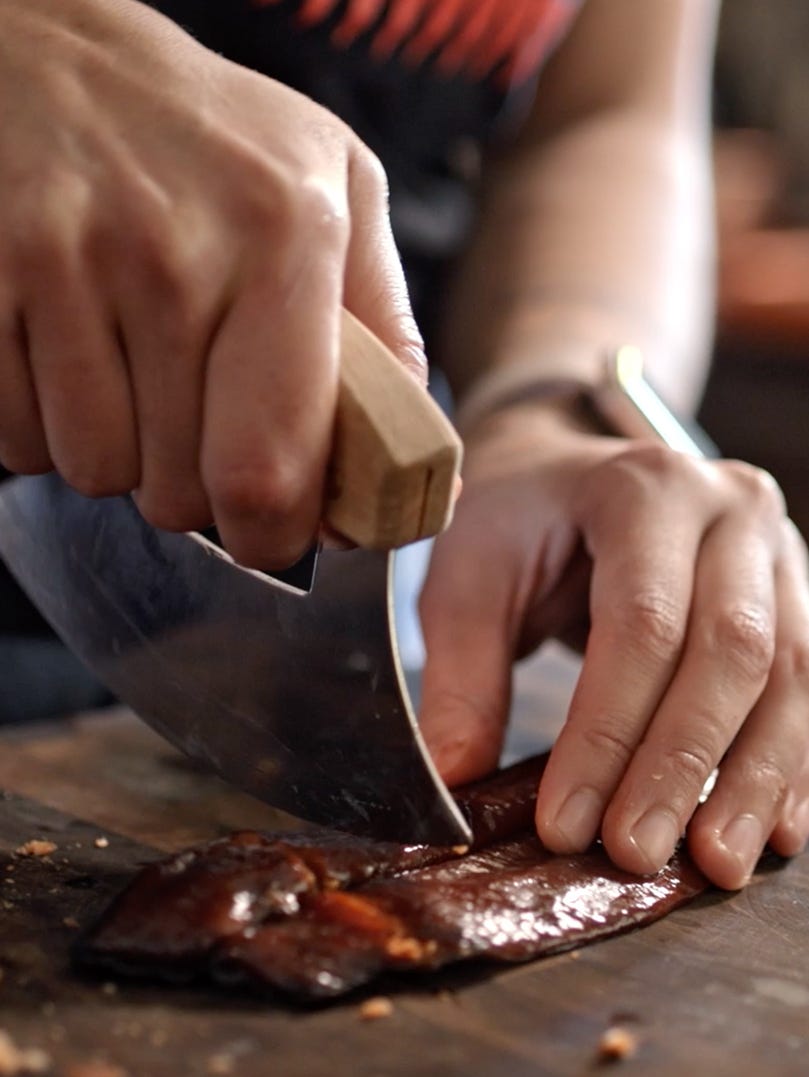Many of the objects in our vast collections of works from Africa and the Americas are imbued with transformative properties. Representing rebirth and renewal, such objects were used during spring and summer to compel deities to bring about a fruitful harvest season. During this time of the year, we highlight some of the most significant of these works at the de Young.
Antelope headdress, early 20th century. Mali, Bamana people. Wood, metal, 16 1/4 x 6 11/16 x 28 3/4 in. Fine Arts Museums of San Francisco, Gift of Professor Erle Loran, 1991.90
Antelope Headdress, West Africa
Fertility is a pervasive theme among the traditional works of art created by such African groups as the Bamana. Farmers who live in the dry grassland region of Mali, the Bamana participate in a special association called Chi Wara. The members of this group are instructed in the successful cultivation of crops. Chi means to work or plant, while wara means wild animal. This particular Chi Wara headdress depicts a mythological being—a working wild animal—that taught the Bamana how to farm in legend or ancient times.
During a ceremony, a headdress like this would be tied to a basket worn on the head of a masker, who would perform a mask (i.e., act out the particular qualities represented by a mask). While the masquerade is in progress, the masker would no longer be a person but would be transformed into the spirit of the mask—a “working wild animal spirit.” When this mask would be performed, the Chi Wara masker would transform into an antelope leaping and pawing at the ground. The masker’s body would be covered with long strips of plant fibers that would hang down from the mask, representing the water necessary for successful crops. Rather than intending to emulate a real antelope, the artist of this work strove to highlight certain traits of the animal, such as speed, grace, and power. The artist gave this headdress several extra horns, which likely symbolize the animal’s strength and power.
Masks and headdresses are important art forms in West and Central Africa and serve many purposes, including teaching, celebrating, and contacting the spirit world. They are ritual objects that are used only by certain people. Usually, these people must belong to a special group in order to gain the right to use these ceremonial objects. For example, young men dance with Chi Wara headdresses only after they are initiated into adulthood and have committed to farming and providing for a family. They may also dance with the headdresses after having contests in which they determine who is the best farmer in the group.
Stela with Queen Ix Mutal Ahaw, 761 AD. Mexico or Guatemala, southern lowlands. Limestone, 92 x 45 x 3 in. (233.7 x 114.3 x 7.6 cm). Fine Arts Museums of San Francisco, Museum purchase, Gift of Mrs. Paul L. Wattis, 1999.42
Stone Monument of a Queen, Maya Culture, Mexico or Guatemala
This stela depicts the powerful queen Ix Mutal Ahaw. Adorned in a dress with jade beads and a feathered headdress, she is performing a ritual to contact the gods. To begin the ritual, she has burned precious liquids, such as tree sap or her own blood, to create sacred smoke. The Maya believed that as the smoke rose toward the sky, a vision serpent would manifest. On this stela, the serpent’s moving body transitions into an anthropomorphic face that emerges from the snake’s mouth. This figure represents Chaac, the Maya god of lightning, who is important for his role in agriculture. The Maya believed that when Chaac’s first bolt of lightning struck the ground, he revealed maize to the people.
We know more about the ancient Maya than we do about any other Mesoamerican culture. This is because the Maya had advanced writing and calendrical systems that scholars still study extensively today. The Maya had a remarkable understanding of numbers and used this knowledge to record dates and history in great detail. To write numbers, the Maya used a system of dots and lines: each dot represented one, while a horizontal line represented five. A person would read a number by adding the dots and lines together. For example, on this stela, the second glyph from the left, along the bottom, contains two bars (2 x 5) and three dots (3 x 1), equaling 13. The hieroglyphic texts on this carving indicate that this monument was made in the year AD 761. The last glyph in the left column identifies the person shown as “Lady of Mutal.” Mutal was the name of two different Maya cities, and the woman portrayed here was likely a royal bride. With a writing system that included five hundred glyphs, the Maya were able to write anything from poetry to instructions for war.
Mural Fragment (Feathered Serpent and Flowering Trees), 6th century. Mexico, Teotihuacan, Techinantitla. Earthen aggregate, lime plaster, and mineral pigments, 23 1/4 x 159 1/2 x 2 1/4 (59.1 x 405.1 x 5.7 cm). Fine Arts Museums of San Francisco, Bequest of Harald J. Wagner, 1985.104.1c-d
Feathered Serpent and Flowering Tree, Teotihuacan Culture, Mexico
This mural, from the ancient Mexican culture of Teotihuacan, depicts a supernatural being: a water-giving snake with green feathers. Notice the stream of blue water that flows from this feathered serpent’s mouth to nourish the trees below. The people of Teotihuacan viewed serpents, which have the ability to shed their skin and transform themselves from old creatures into new ones, as symbols of rebirth and renewal.
Above the roots of each tree are various glyphs. These glyphs are a form of picture writing; however, their meaning remains a mystery. To date, only a small number of glyphs have been found at the city of Teotihuacan, unlike in Mayan cities. Despite this, scholars believe that the people of Teotihuacan had a complex writing system, given their culture’s many wondrous accomplishments. It is thought that most of their writing was likely done on perishable materials, such as paper, wood, and cloth, that would not withstand time. As new discoveries are made at Teotihuacan, scholars hope that more examples of writing will be found. Perhaps one day in the future, scholars will fully understand the glyphs of this ancient culture.
Further Reading
Robb, Matthew H., Rubén Cabrera Castro, David M. Carballo, and George L. Cowgill. 2017. Teotihuacan: City of Water, City of Fire.
